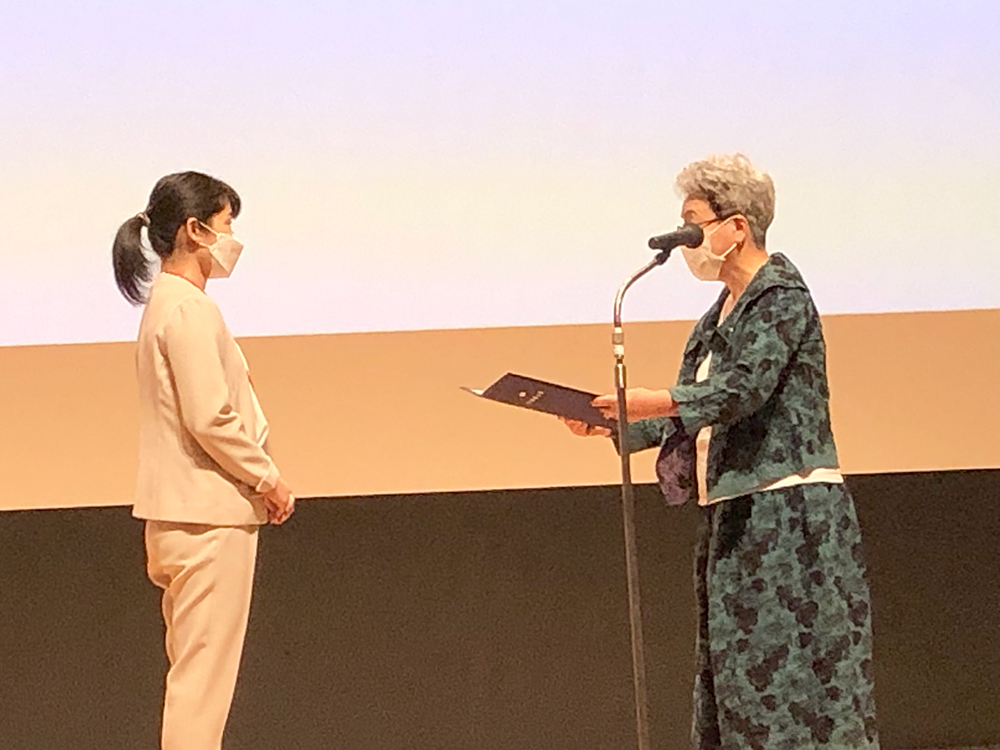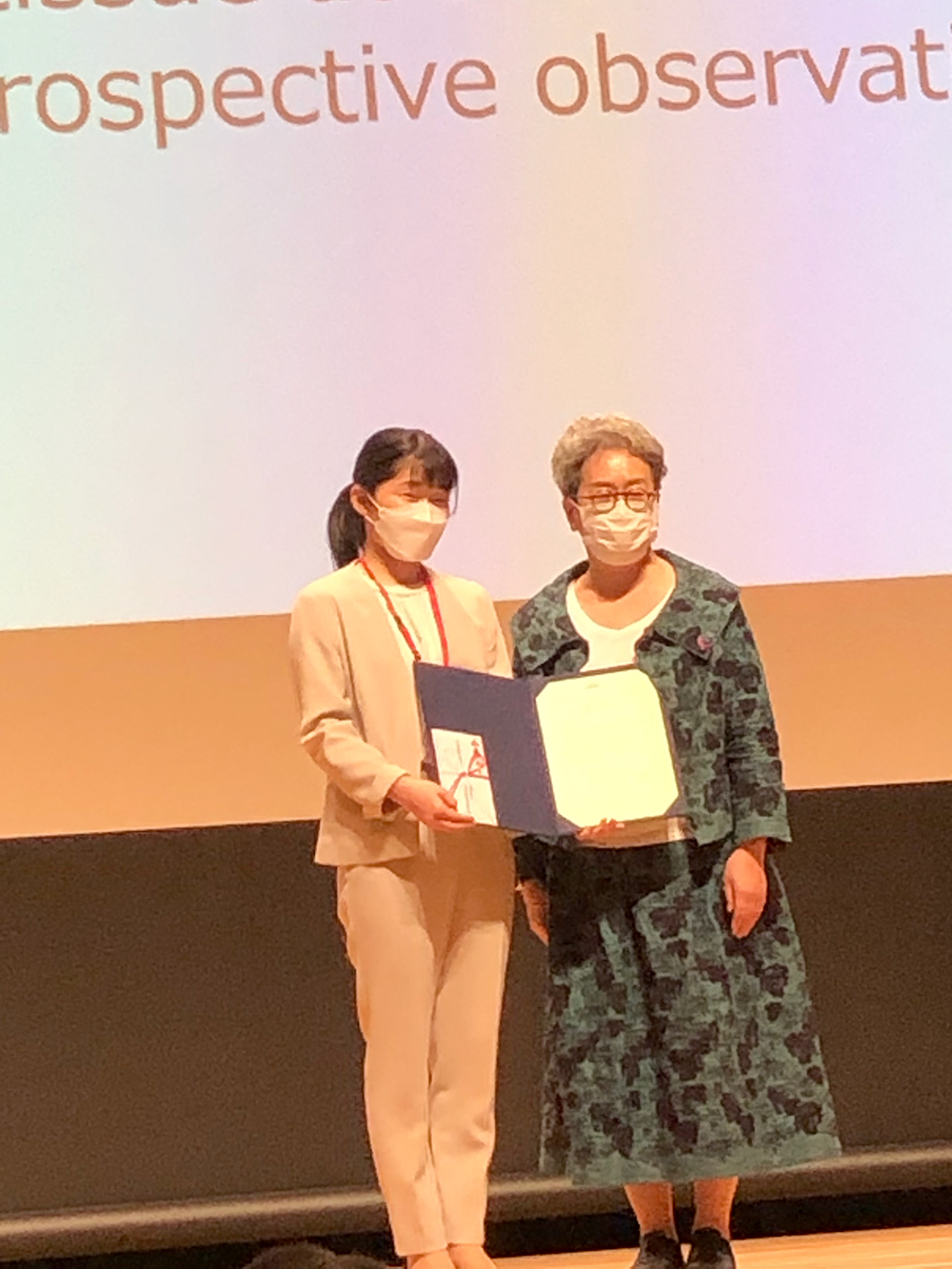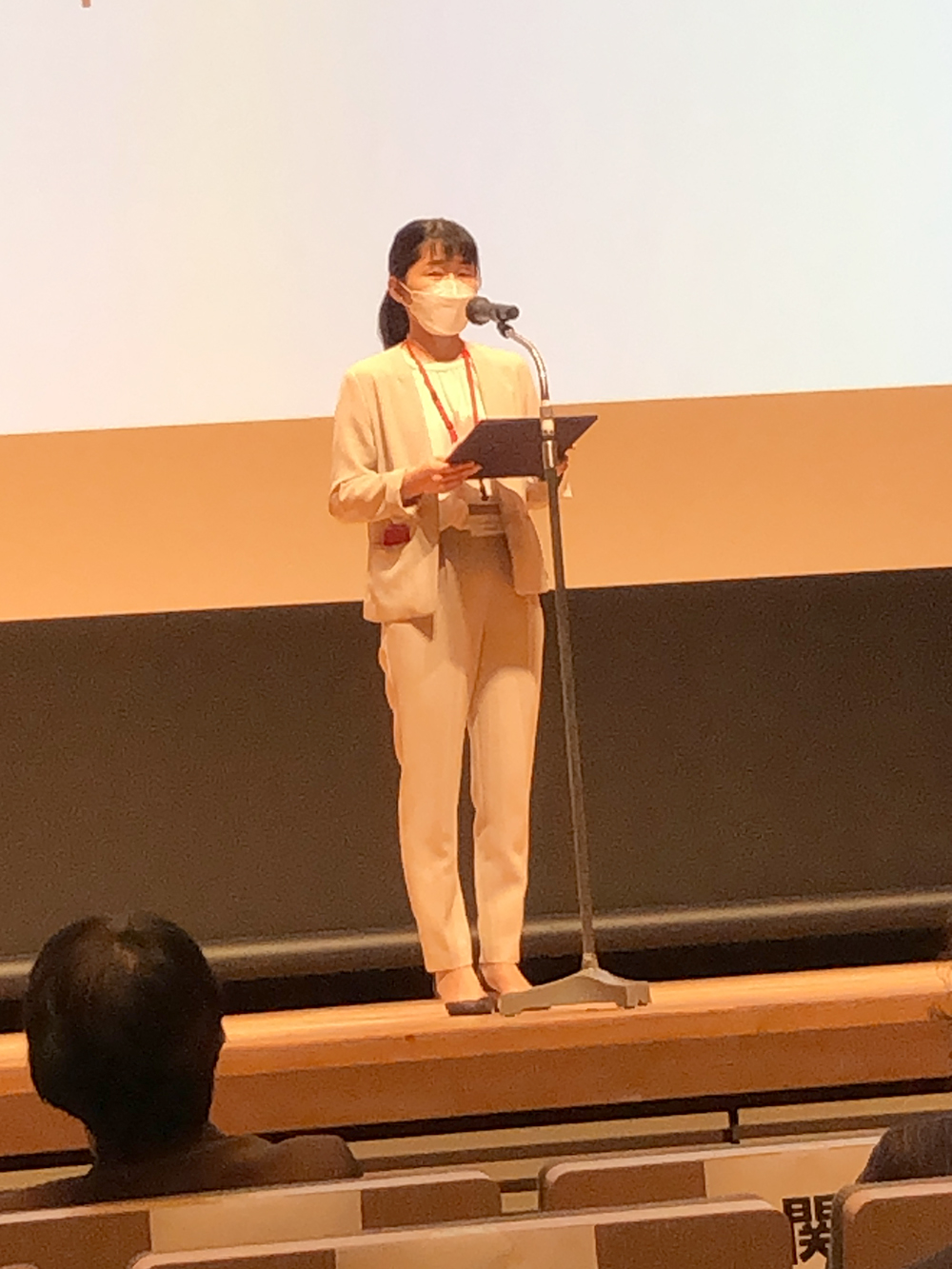Assistant Professor Mari Abe-Doi of the Department of Gerontological Nursing/Wound Care Management has received the outstanding paper award at JANS (2022) for her presentation titled “Impacts of cytotoxic drugs to subcutaneous tissue at catheterization sites in cases without obvious extravasation.”
Extravasation is the inadvertent infiltration of systemic anti-cancer therapies into the subcutaneous tissues surrounding the administration site. Prevention and early detection of this adverse event are clinical challenges. Dr. Abe-Doi and her colleagues’ study aimed to investigate subcutaneous tissue changes in non-macroscopically damaged catheterization sites after chemotherapy administration.
“Comparing the changes in the catheterization site between the treatment day and the next treatment day will provide information necessary for oncology nursing care of extravasation. Clinical studies about the impact of chemotherapy on tissue at the catheterization site are limited except for apparent extravasation cases,” said Dr. Abe-Doi.
Dr. Abe-Doi and her research colleagues analyzed data from 41 cancer patients receiving outpatient chemotherapy. The research team used ultrasonographic images to assess the condition of subcutaneous tissues, including the vein, at the catheterization site before catheterization, immediately after chemotherapy, and on the next scheduled treatment day. The research team also collected and analyzed data on macroscopic inspection, palpation, and subjective symptoms.
The research team found that subcutaneous tissue damage may be overlooked by conventional assessment alone, and therefore, unhealthy sites may be inappropriately reused for chemotherapy administration. The research findings demonstrated that ultrasonography provides useful information for avoiding reusing damage.
“Ultrasonography provides us with invisible and nonpalpable information. This is a care innovation. We strongly believe that information on subcutaneous tissue status will help prevention and early detection of extravasation,” said Dr. Abe-Doi.




